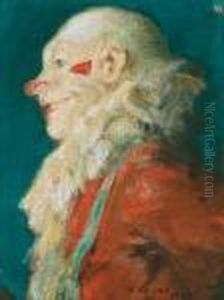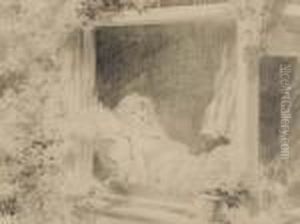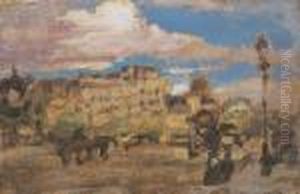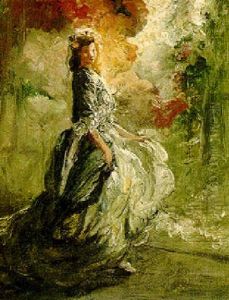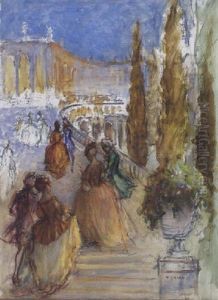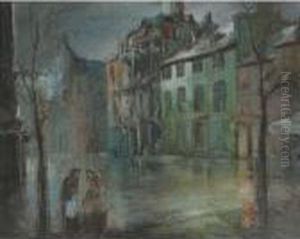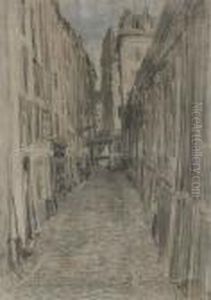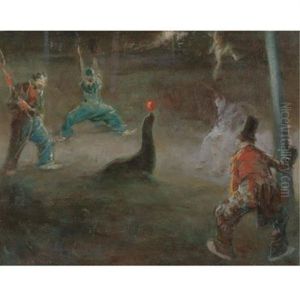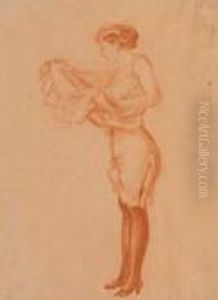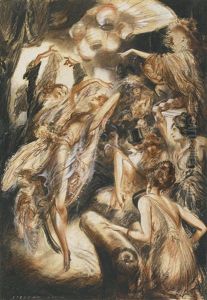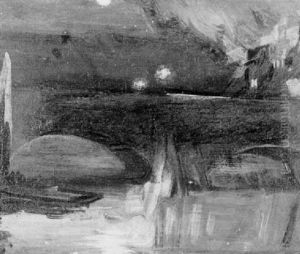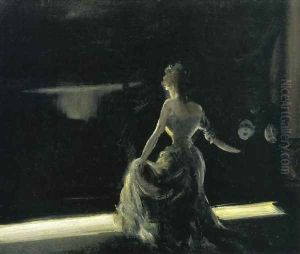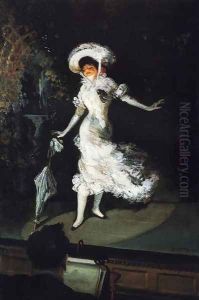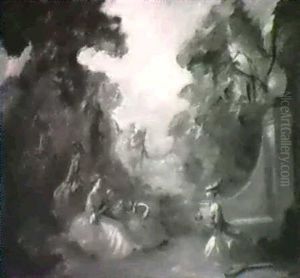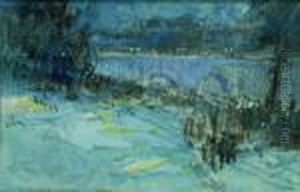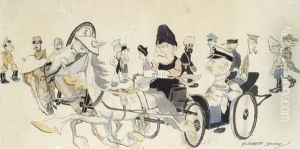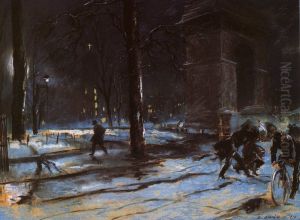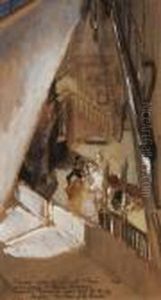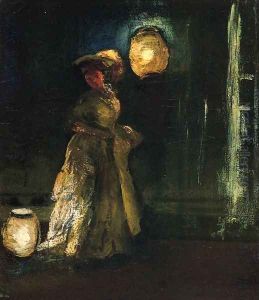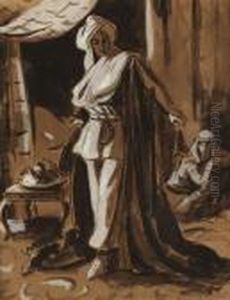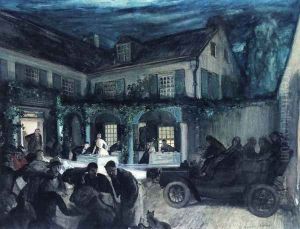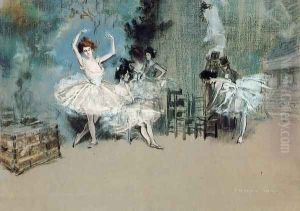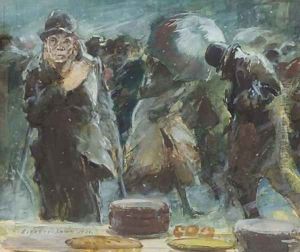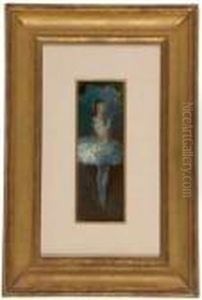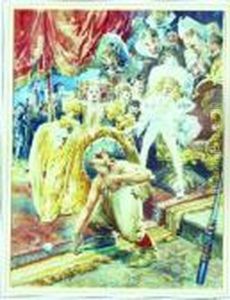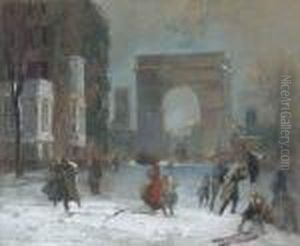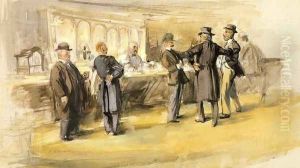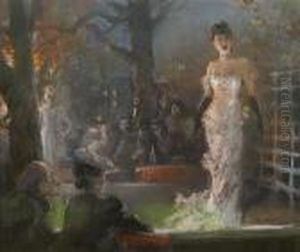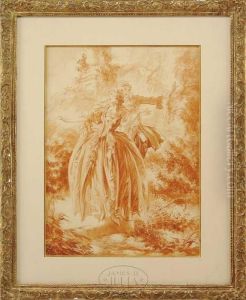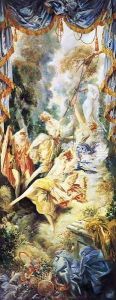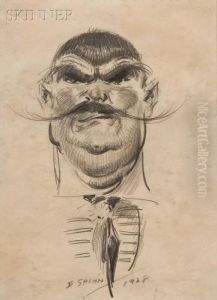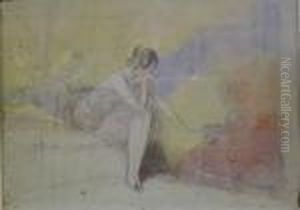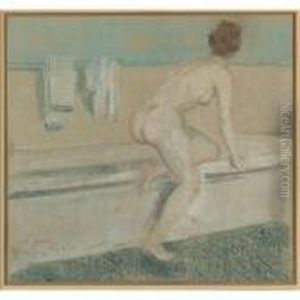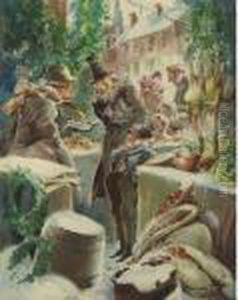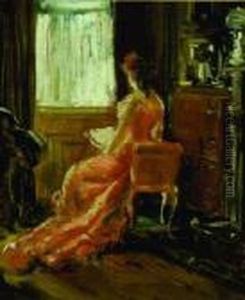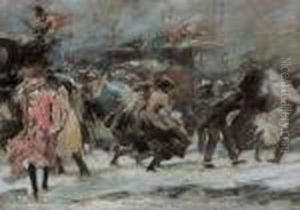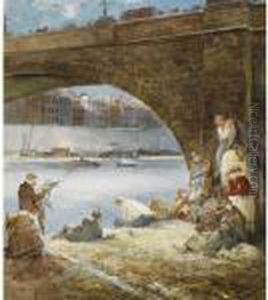Everett Shinn Paintings
Everett Shinn, born on November 6, 1876, in Woodstown, New Jersey, was a prominent American artist known for his realistic urban genre scenes and as a member of the Ashcan School, a group of realist painters that focused on depicting daily life in New York City. Shinn's early life in a rural setting contrasted sharply with the urban themes that would later dominate his work. He showed an early interest in art and was largely self-taught in his initial years. His formal education began when he attended the Spring Garden Institute in Philadelphia for mechanical drawing and continued at the Pennsylvania Academy of the Fine Arts, where he studied under Thomas Anshutz.
Shinn's career took a significant turn when he moved to New York City in the late 1890s. There, he became part of a circle of artists that included George Luks, William Glackens, and John Sloan, who would later be recognized as key figures of the Ashcan School. These artists shared a common interest in depicting the vitality and vibrancy of everyday life in New York, often focusing on the city's lower and middle classes.
Everett Shinn's work was distinguished by his fascination with the city's theaters, music halls, and circuses, subjects that frequently appeared in his paintings. His urban scenes were populated with figures that captured the dynamism and energy of city life. Shinn was also known for his exceptional skill in pastel, a medium in which he achieved both critical and commercial success.
Besides his paintings, Shinn worked as an illustrator for several major magazines of his time, including Harper's Weekly and Scribner's Magazine. His versatility extended to mural painting, set design for Broadway plays, and even architectural design, showcasing his broad talents across different artistic disciplines.
Despite the initial recognition and success, Everett Shinn's work fell into relative obscurity after his death on May 1, 1953. However, in recent years, there has been a resurgence of interest in his contributions to American art, particularly his role in the Ashcan School and his depiction of early 20th-century urban life. Today, Shinn's work is celebrated for its energetic portrayal of New York City's bustling streets and vibrant entertainment venues, capturing an important era in American history with authenticity and artistic flair.
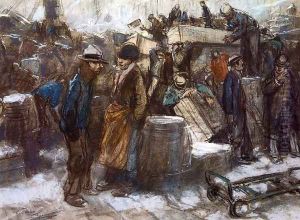
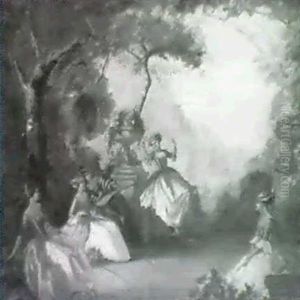
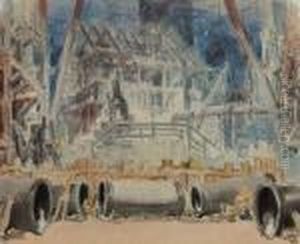
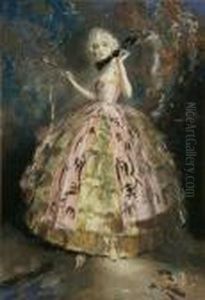
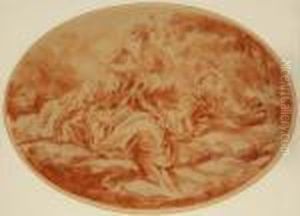
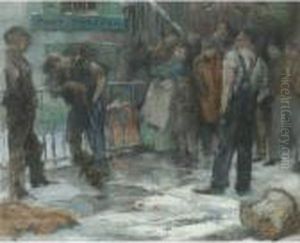
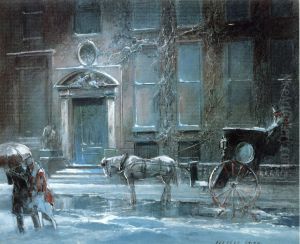
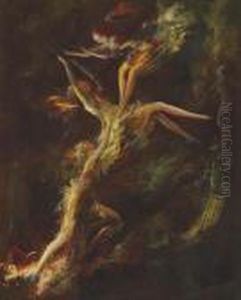
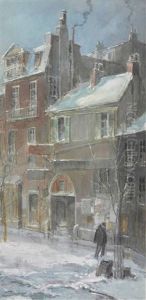

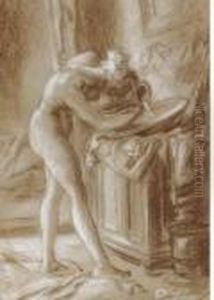
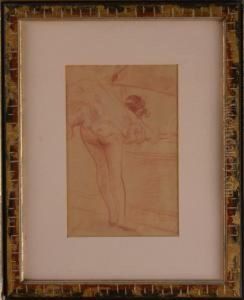
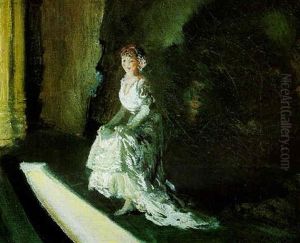
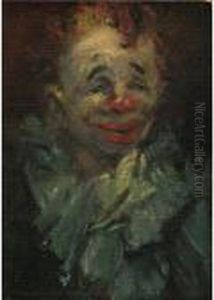
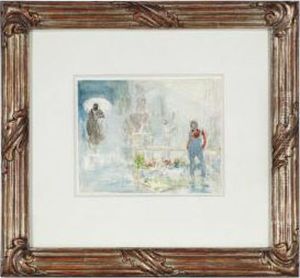
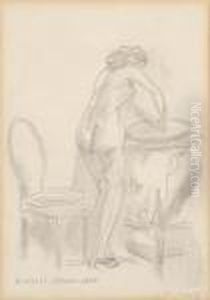
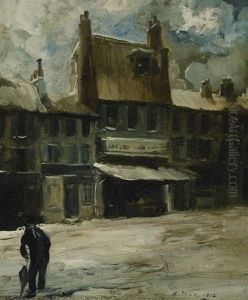
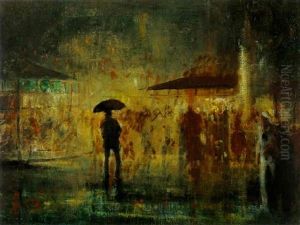
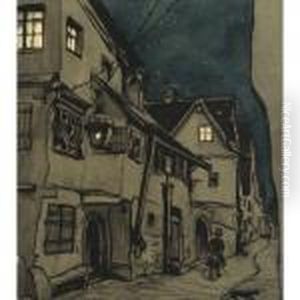
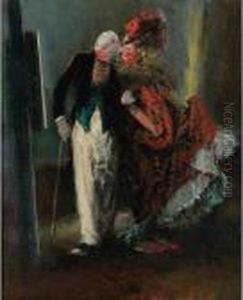
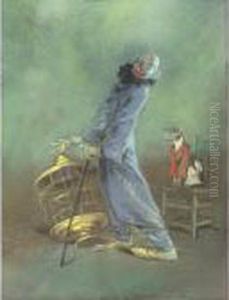
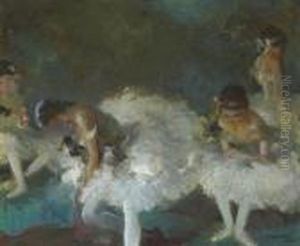
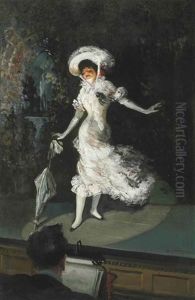

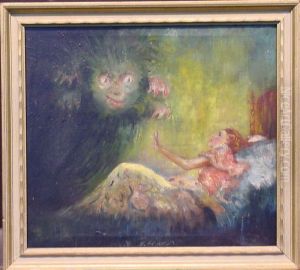
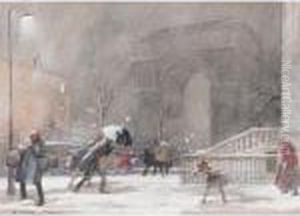
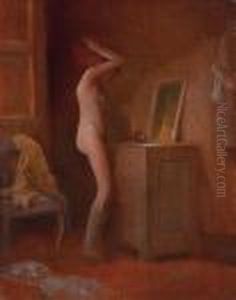
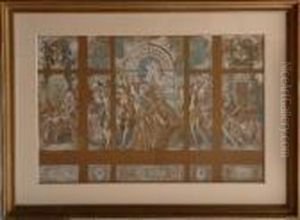
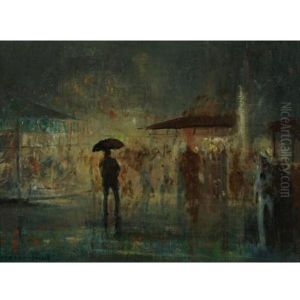
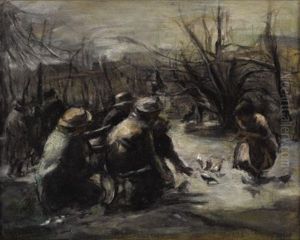
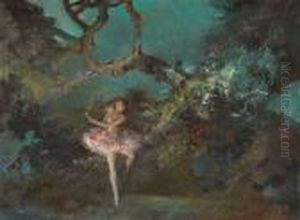
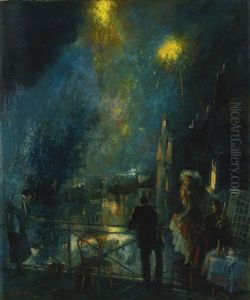
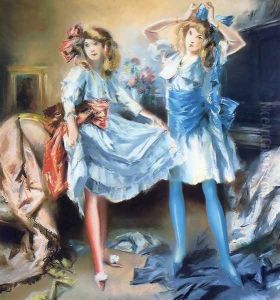
![Bar Room Brawl [old Bowery, New York]](https://www.niceartgallery.com/imgs/3139730/s/everett-shinn-bar-room-brawl-old-bowery-new-york-b0ba2141.jpg)
